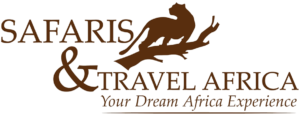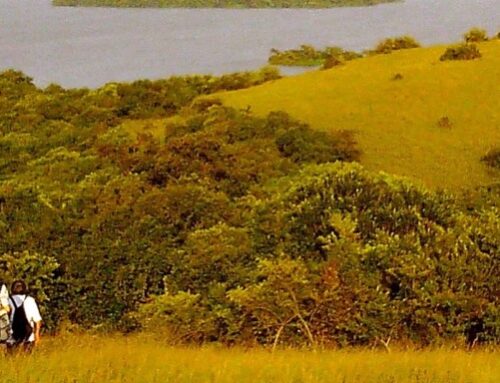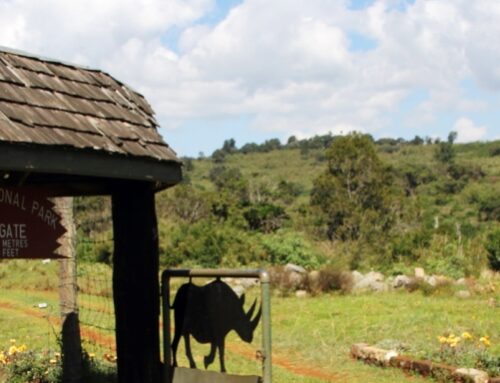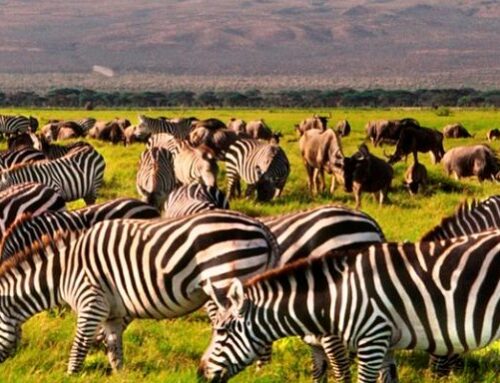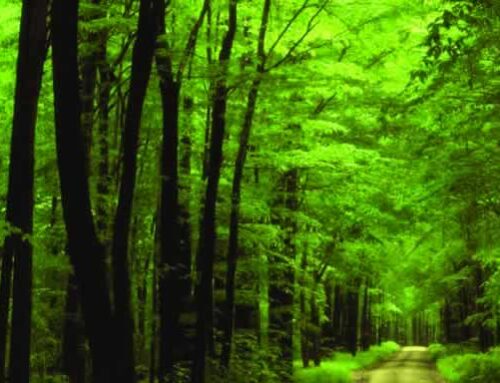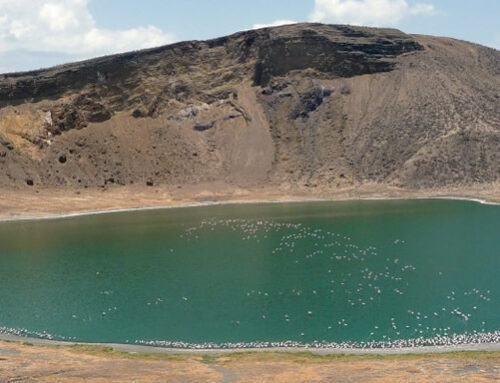Samburu National Reserve lies in the Northern part of Kenya. Count Telekis Companion Von Holnel, visited the area in the early 1860s and described it as teeming with game especially buffalos and rhinos. The Waso Nyiro became renowned early this century as “big game country” and attracted such famous hunters as Arthur Neumann who set up a camp on the site where Samburu lodge now stands.
Samburu National Reserve is one of the 56 protected areas in Kenya. It is famous North of the equator because of the richness of flora and fauna; it can be reached through Nairobi-Isiolo-Marsabit road and Maralal-Wamba-Isolo road. Lying on the flood plains and bottom land of Waso Nyiro drainage system in the Great Rift Valley. It rises to an altitude of 2785 ft above sea level and covers an area of 390 km2.Samburu National Reserve was established in 1948 as part of the enormous Marsabit National Reserve under the national park ordinance. Marsabit National Reserve was gazetted in 1961 and the Senior Game Warden of Samburu District Rodney Elliott suggested to the Samburu County Council that an area north of the river be set aside as a game reserve. It became a reality due to foresight of the County Council and generous assistance given by several individuals and foundations. In 1962 with the financial help from Elsa Trust, Samburu Game Reserve was formed. In January 1963 the Minister for Local Government recommended Samburu National Reserve to be administered by the African District Council of Samburu
Climate
The climate for Samburu is hot dry with cool nights with an average annual maximum temperature of 30ºc (86F) and minimum annual temperature of 20ºc (68F).
- Rainfall
Samburu National Reserve receives 350mm (14 inches) during peak rainfall in April and November (Variable). Long rains are expected in early April to the end of May and short rains from mid October to mid December. Dry conditions usually prevail from June to early October and from January to March.
- Vegetation
Botanist have identified more than 2 dozen plants communities, but thorny scrubs cover much of the reserve and the most common are Acacia elator, Acacia tortolise, Salvadora pesica and the Down palms.
Animals
There are over 50 species of wild animals in the reserve including unique species of Gravy Zebra, Reticulated Giraffe, Besia Oryx, Grater and Lesser Kudu, Gerenuk, Somali ostrich, pancake tortoise and others.
There are over 450 species of birds identified and aquatic species in the Waso Nyiro River.
Communities
The neighbouring communities to the reserve are the Samburu tribe a clan of the Maasai. They play a major role as part of tourist attraction in the area due to their unique cultural experiences by tourist through traditional ceremonies, food, dances and sale of traditional crafts.
Major attractions
Its home to the big five
- Elephant
- Lion
- Rhino
- Leopard
- Buffalo
Other animals of interest are:
- Gerenuk
- Reticulated Giraffe
- Somali Ostrich
- Gravy Zebra
- Besia Oryx
- Wild Dog- Endangered
- Pun cake Tortoise – Endangered
It contains over 450 species of indigenous bird
There are variety of reptiles and aquatic species in the Waso Nyiro River in Samburu National Reserve
Plants – botanist have identified 2 dozens of plants species
The dominant ones are
- acacia elator
- salva dora pesica
- Down palms.
In the 1960s and 1970s more than 160 fossil remains of early man including Homo Habilis and Homo Erectus were discovered, putting man’s origins back three million years. More than 4,000 fossil specimens of mammal and stone age artefacts have been discovered here.
The major Topographical features include
- The spectacular great Rift valley
- Lake lokipi hot spring the breeding site of flamingo and home to various reptiles.
- Lake Turkana (known as the Jade sea)
- Largest indigenous forest in Kenya is located here
- The amazing escarpments – Lolokwe, Ndoto, Nyiro (Mathew ranges)
Waso Ngiro River meanders through the rugged landscape and provides the only source of water in Samburu national reserve and
Visitors may stay either in:
- Lodges in SNR – Samburu Lodge (120beds), Samburu Heritage (54 beds), Larsen’s Luxurious tented camp (34 bed)
- Campsite in SNR – There are public & private camps
Outside the Samburu Reserve there are other nearby facilities such as:
- Maralal Safari Lodges
- Yare Safari Lodge
- Desert rose
- Sarara camp
- Kitich camp
- Umoja campsite
- Access is simple– by Air and Road
- Through the Isiolo – Marsabit A2 main road
- Nairobi to SNR 347 km
- Maralal to SNR 222 km
The access infrastructure is fairly complete.
Good and controlled game drive road network in the reserve.
Cultural and community attractions
Unique cultural experience of the Samburu (the butterfly people) by visitors
They have cultural villages where they sell their traditional craft
They dance traditional songs
They can provide traditional food
They accommodate visitors in their traditional huts and community campsites.
The communities around the reserve have started community wildlife conservancies for wildlife conservation outside the reserve.
The communities around the reserve receives revenue sharing which they put back toward uplifting their livelihood and conservation, through employing, training and equipping community game scouts to conserve wildlife in their area.
Through the revenue sharing they are encouraged to open up the corridors for the migratory species
Since the area is small it also encourage the communities to enlarge the dispersal areas for wildlife
